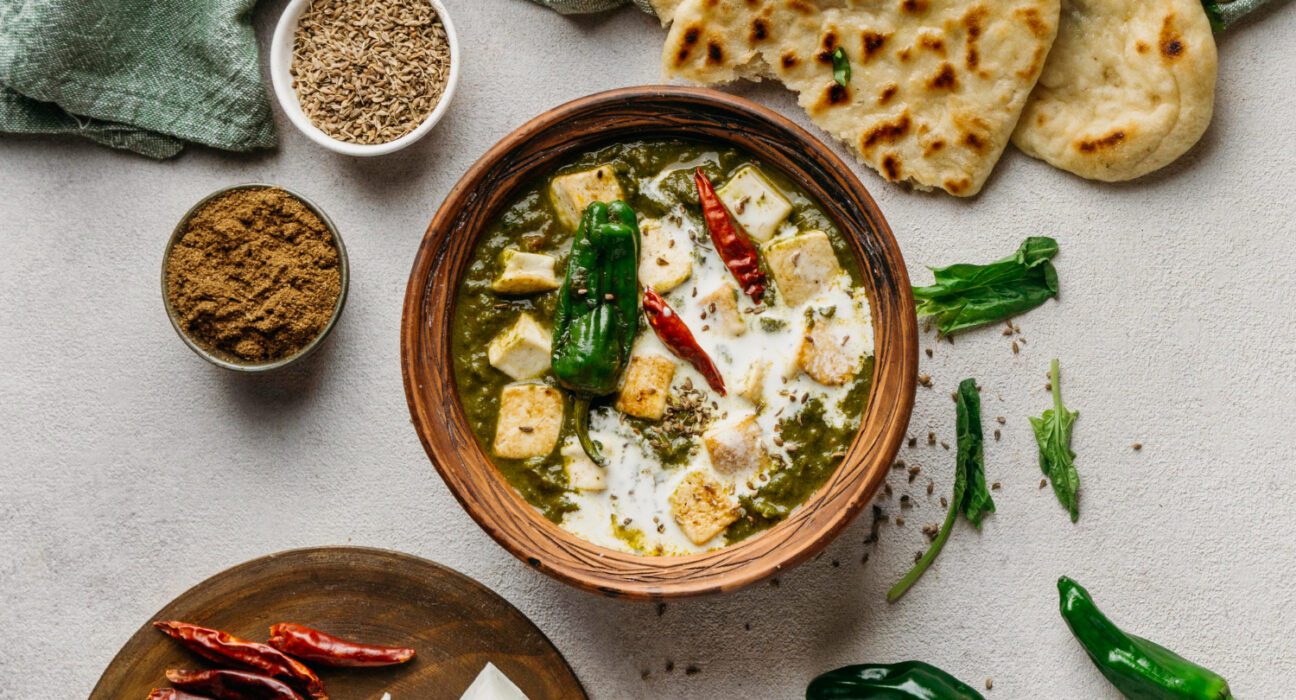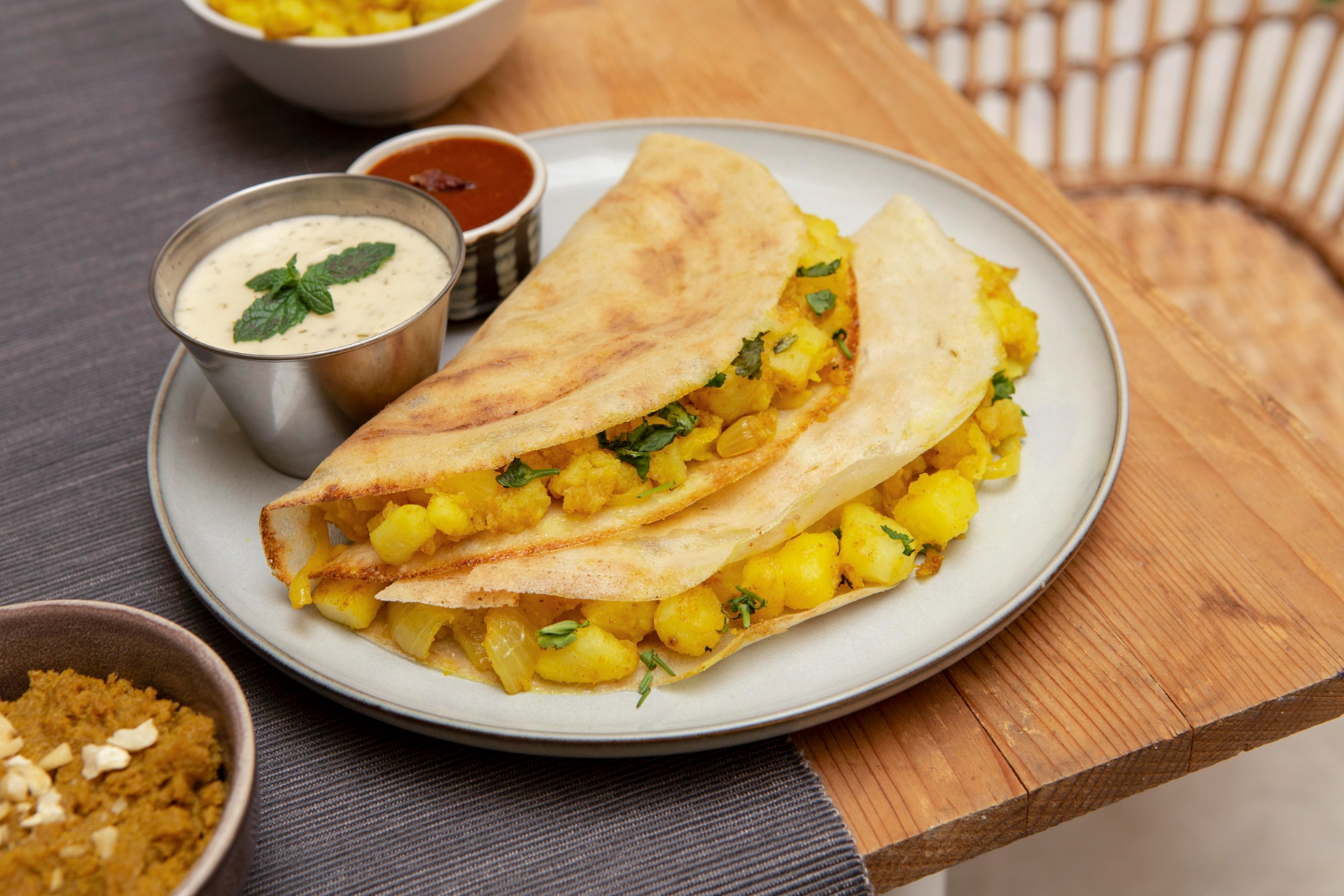Afghani paneer is a creamy paneer curry that features a gentle blend of spices. Unlike the spicier Indian curries, this dish emphasizes a balance of mild yet flavorful ingredients, including fresh cream, cashew paste, and turmeric powder. Whole spices like bay leaf and cinnamon stick create an aromatic foundation, while a hint of crushed black pepper provides a subtle kick.
This restaurant-style paneer dish is often served with naan, paratha, or steamed rice. For a vegan twist, you can even use tofu instead of paneer while keeping the gravy equally luscious and creamy.
History and Cultural Significance of Afghani Paneer
Afghani paneer has its roots in the vibrant culinary traditions of Afghanistan, where creamy and mild dishes often take center stage. As Afghan flavors blend seamlessly with Indian spices, dishes like Afghani paneer emerge as a fusion that reflects the best of both cuisines.
Afghanistan is celebrated for its rich and comforting foods, and this dish draws inspiration from the region’s use of dairy, nuts, and mild spices. In Indian cuisine, paneer shines as the main ingredient, taking the place of meat or other proteins typically found in Afghan cooking.
The dish also embodies the hospitality associated with Afghan and Indian cultures. Its luxurious, creamy gravy is considered a symbol of indulgence and is often served during celebrations or special gatherings.
Ingredients for Afghani Paneer Recipe
This dish is built on a foundation of flavorful and creamy ingredients. Let’s dive deeper into each component:
For the Paneer Curry
- Paneer (250g): The star ingredient, paneer, is a fresh Indian cheese that’s soft, creamy, and versatile. It absorbs the flavors of the gravy while maintaining its texture.
- Oil or Ghee (2 tbsp): Adds a rich depth to the dish. Ghee enhances the flavor, while oil provides a lighter alternative.
- Bay Leaf and Cinnamon Stick: These whole spices lend warmth and aroma to the curry base.
- Onion (1 large): Finely chopped onions form the base of the gravy, providing a natural sweetness when caramelized.
- Ginger-Garlic Paste (1 tbsp): This essential mix adds depth and earthy flavors to the dish.
- Green Chilies (2): Slit chilies add a mild kick, which balances the creamy richness of the dish.
- Turmeric Powder (1 tsp): Known for its vibrant color and anti-inflammatory properties, turmeric adds a golden hue.
- Coriander Powder and Cumin Powder (1 tsp each): These ground spices enhance the earthy, nutty flavor of the dish.
- Garam Masala (1 tsp): A blend of warming spices that gives the dish its signature Indian touch.
- Salt to Taste and Crushed Black Pepper (½ tsp): Essential for seasoning and balance.
For the Gravy
- Fresh Cream (½ cup): The secret to the luxurious texture of Afghani paneer.
- Yogurt (¼ cup, whisked): Adds tanginess to the gravy. Use fresh, non-sour yogurt for the best results.
- Cashew Paste (½ cup): Made by blending soaked cashews, this paste thickens the gravy and adds a nutty flavor.
- Water or Vegetable Stock (1 cup): Adjusts the consistency of the gravy. Stock enhances flavor, while water keeps it light.
For Garnish
- Fresh Coriander Leaves: Adds a fresh, herbal finish.
- Drizzle of Fresh Cream: Makes the presentation even more appealing.
Detailed Cooking Techniques for Afghani Paneer
Perfecting this Afghani paneer recipe requires attention to detail. Here are step-by-step techniques to ensure a flawless dish:
Preparing the Paneer
- Soaking Paneer: For store-bought paneer, soak the cubes in warm salted water for 10 minutes. This keeps them soft and prevents them from becoming chewy.
- Searing Paneer: Lightly sear the paneer cubes in oil or ghee over medium heat for 1–2 minutes. This step is optional but adds a subtle golden crust that enhances the texture.
Building the Base
- Golden Onions: Sauté the finely chopped onions until golden brown. This caramelization is key to achieving a flavorful curry base.
- Deglazing the Pan: After adding the ginger-garlic paste, use a splash of water to deglaze the pan and prevent the spices from burning.
Crafting the Gravy
- Smooth Cashew Paste: Blend cashews with water until completely smooth. A creamy paste ensures a silky texture in the gravy.
- Yogurt Consistency: Whisk yogurt until smooth to avoid curdling when added to the hot pan. Lower the heat before incorporating it.
- Simmer for Flavor: Once the gravy is combined, let it simmer on low heat for 10–15 minutes to allow the flavors to meld.
Final Touches
- Adding Paneer: Gently fold the paneer cubes into the gravy at the end to prevent breaking. Simmer for just a few minutes to let them absorb the flavors.
- Finishing with Cream: Add fresh cream at the very end for a luxurious, restaurant-style finish.
Serving Suggestions
Afghani paneer is versatile and pairs beautifully with a variety of dishes:
- Indian Breads: Serve with butter naan, garlic naan, or laccha paratha for a classic combination.
- Rice Dishes: Pair with jeera rice, saffron pulao, or steamed basmati rice for a wholesome meal.
- Salads: Add a refreshing side like cucumber raita or a simple green salad to balance the richness of the dish.
- Appetizer Pairing: Serve as part of a larger spread with samosas or vegetable pakoras for an indulgent feast.
Health Benefits of Ingredients
This dish isn’t just delicious—it’s packed with nutritious ingredients:
- Paneer: A great source of protein and calcium, supporting muscle health and bone strength.
- Cashews: Rich in healthy fats, vitamins, and minerals like magnesium, which promotes heart health.
- Turmeric Powder: Contains curcumin, known for its anti-inflammatory and antioxidant properties.
- Yogurt: A probiotic food that aids digestion and boosts gut health.
- Spices: Ingredients like cumin, coriander, and cinnamon have digestive and anti-inflammatory benefits.
Storage and Reheating Tips
To enjoy leftovers or prepare in advance, follow these tips:
- Refrigeration: Store the curry in an airtight container in the refrigerator for up to 3 days.
- Freezing: The dish can be frozen for up to a month. However, avoid adding fresh cream before freezing; add it after reheating.
- Reheating: Reheat gently on the stovetop over low heat, adding a splash of water or stock to adjust the consistency. Stir carefully to avoid breaking the paneer.
This Afghani paneer recipe brings together a delightful mix of mild spices, creamy textures, and rich flavors. Whether you’re preparing a meal for your family or hosting a dinner party, this restaurant-style dish is sure to impress. By following the detailed techniques and tips in this guide, you can create a luxurious culinary experience right in your own kitchen.
So, roll up your sleeves, gather your ingredients, and treat yourself to the creamy goodness of Afghani paneer. It’s a recipe you’ll want to make again and again!






